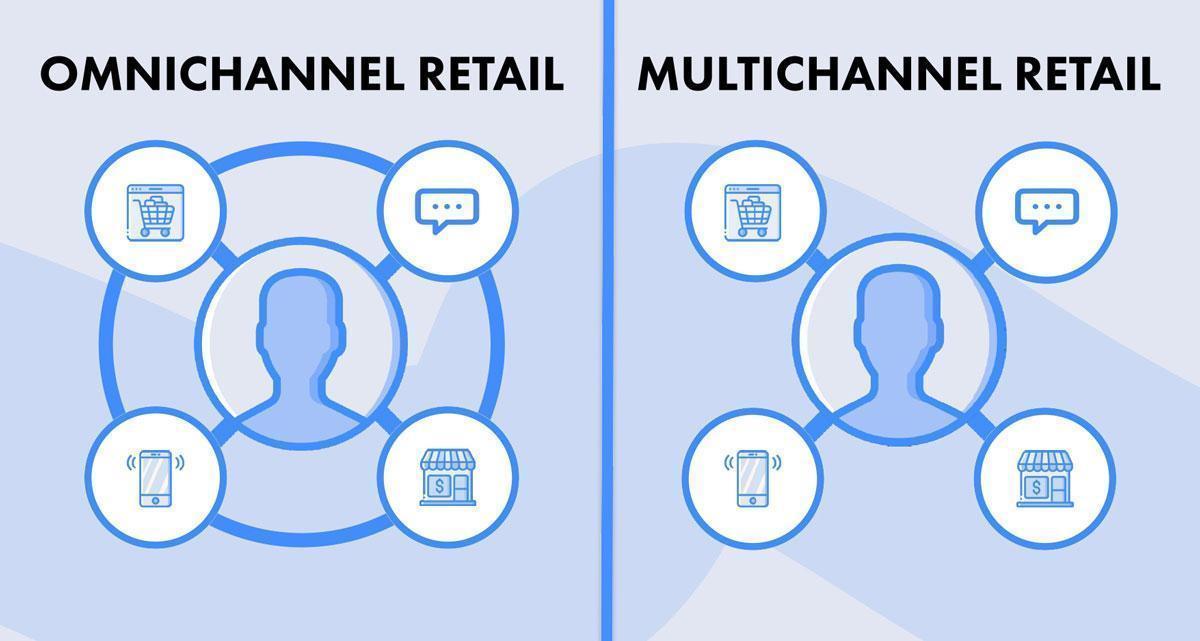Save up to 30%* on your card processing with the Octalas Group.
More DetailsInfo@octalas.com
Info@octalas.com
Save up to 30%* on your card processing with the Octalas Group.
More DetailsTurn your Android Smartphones Into Card Readers With The Octalas Group.

Every retail business strategy aims to build customer loyalty and ensure an excellent shopping experience. To succeed at this, it is important to track the consumer journey and have a competent strategy that covers every point of interaction with the customers.
Nowadays, there are multiple approaches for companies to choose from, with multichannel and omnichannel retailing among the most widely used ones. Read ahead for a detailed overview and comparison of these two strategies, alongside tips on which one to integrate into your business and marketing approach.

Even though both omni- and multichannel solutions deal with multiple offline and online sales outlets, they implement different approaches. Let’s start the comparison by taking a look at their definitions:
Multichannel Retail

Multichannel retail is a marketing and sales approach where a business uses multiple separate channels to attract customers and communicate with them. For example, a traditional retailer may have a physical store and a website with little interaction between each other.
The main advantages of multichannel retail are as follows:
The main disadvantages of this marketing strategy are:
An example of a multichannel retail strategy among well-known brands is Apple. It’s considered a “click-and-mortar” store, meaning that it operates both offline and online sales channels.
Yet, Apple’s land-based stores are primarily designed not for sales, but rather to complement its ecommerce platform.Thus, the company’s offline stores work as touchpoints with customers that support an immersive experience and boost brand loyalty.
Apple’s multichannel retail approach follows specific brand guidelines to ensure a consistent visual style across all online and offline marketing channels. This contributes to the perception of this brand’s overall shopping experience as holistic regardless of which sales channel is delivering it.
Omnichannel Strategy

Omnichannel retail, on the other hand, is a strategy that implies different channels integrated into one seamless system. The omnichannel technology enables the customers to interact with the merchant via any of the synchronized channels that are convenient for them. For more detailed information, check our comprehensive guide on omnichannel retail.
The major advantages of the omnichannel strategy for a brand are:
The biggest downside of omnichannel integration is considered to be the need to implement special software and update the organizational structure. However, with all-in-one solutions, such as the one from Payneteasy, this is no longer a reason to worry about synchronizing your business sales channels – read ahead for more details.
An example of an omnichannel brand that demonstrates an excellent job managing its online and offline channels as one inseparable mechanism is Zumiez. It’s a US clothing retailer that offers its customers items for sports like snowboarding, skateboarding, and motocross.
The omnichannel brand boasts click-and-collect orders, shared cart, in-store products search online, loyalty points across channels, and plenty of other perks, making its customer journey extremely convenient.

The customer journeys are a major difference between multichannel and omnichannel approaches. Here is an example of a customer’s experience with a brand using a multichannel retail strategy:
As you can see, the physical store and the website in the example are not interconnected channels, which causes confusion for both the customer and employee and delays the issue’s resolution. Now, let’s take a look at what a typical customer journey looks like with an omnichannel strategy:
Here, the omnichannel process of switching between sales channels was seamless and convenient for the customer.
Thus, with a multichannel approach as opposed to omnichannel marketing, the retailers are not always able to maintain the brand image, ensure the integrity of the pricing policy, deliver the same quality of services, and provide equivalent access to goods through different business channels.
However, an average customer has little to no understanding of how many channels the brand uses to sell products and provide services. They are focusing on how smooth the shopping process is, how consistent the prices are, and whether the availability is matching on all commercial platforms.
Linking channels into an omnichannel system by introducing ecommerce solutions to physical stores enables the business to use them as a unified tool to deliver the best possible customer experience.
Apart from omnichannel and multichannel marketing approaches in retail, there’s yet another strategy. In cross-channel marketing, companies use different communication methods, such as promotional emails, SMS campaigns, web push notifications, and so on.
Brands use several channels at the same time that complement the work of one another and enhance the overall impact on the customers. The performance of marketing strategies can be tracked simultaneously, allowing companies to calculate and analyze ROI.
Here’s an example of a common cross-channel journey for customers:
In a store with an omnichannel marketing strategy, the customer would’ve been able to check for the product’s availability on the website.
Now that the difference between omnichannel, cross-channel, and multichannel is clear, you can decide which strategy suits your retail niche and customer base better.
Generally speaking, when your goal is to create a new sales channel, it is likely that your company and customers will benefit from cross-channel communication.
An effective marketing strategy for a complex or a heterogeneous audience, on the other hand, is likely to require an omnichannel strategy due to its ability to cater to a variety of audiences through multiple channels that work together as one.
Finally, if your target audience is so wide and diverse that your customers will be better off using separate channels and don’t really need them to coincide, the multichannel retail strategy will work just fine.
All in all, as long as you realize where your company is at this point, which goals it’s facing, and keep your data collection and marketing channels up-to-date, you are doing a great job.
However, it’s crucial that you understand that both multichannel and cross-channel retail models are typically just temporary measures. As your company scales and as new payment trends keep arising, the omnichannel strategy will prevail due to its convenience and holistic approach.
Payneteasy Omnichannel Solution – Utmost Convenience for Businesses and Clients

The omnichannel marketing approach is clearly a more advanced system, making it one of the leading retail strategies today. With it, you can introduce a unified service standard, provide your customers with an individual approach, improve client experience, and increase brand loyalty.
So, why wait? With the help of a smart omnichannel solution, your business will thrive and increase its customer retention rate and revenues significantly. Luckily, Payneteasy is here to help you with updating your retail business approach across all sales channels.
Since 2006, Payneteasy has been successfully providing customers worldwide with payment solutions of varying complexity. When it comes to our omnichannel solution, you will be receiving a service with extra-fast integration and branded payment pages on the following purchase channels:
The optimization of your business’s payment operations is our goal. Send us a request now, and we will get back to you with a custom omnichannel solution within the shortest time frame!